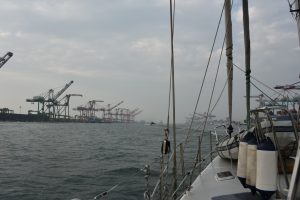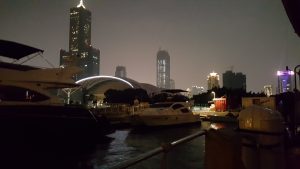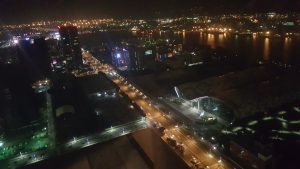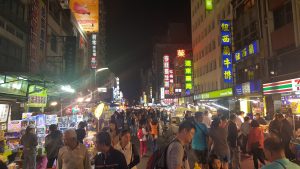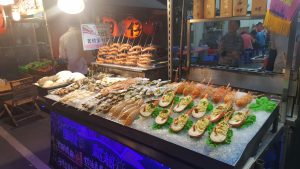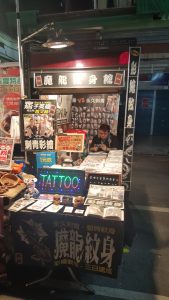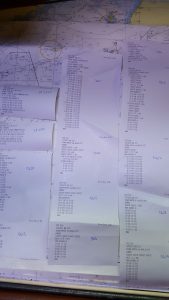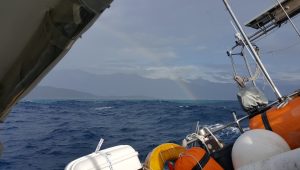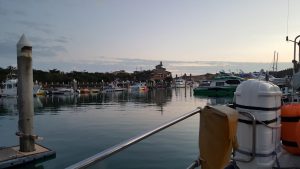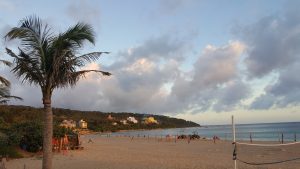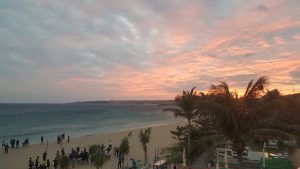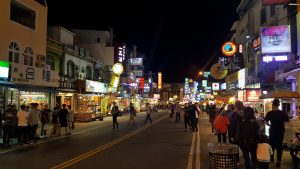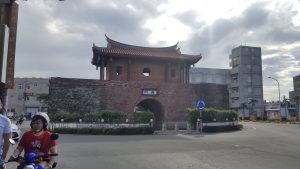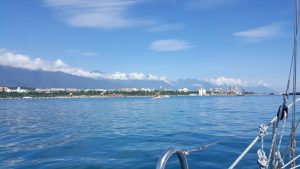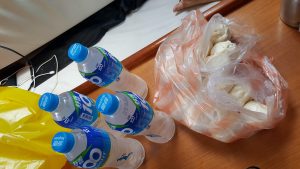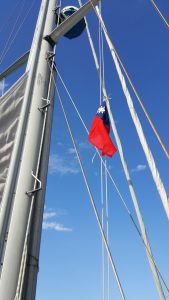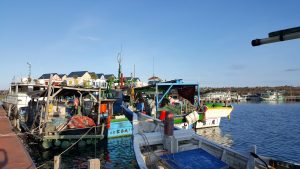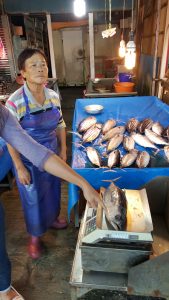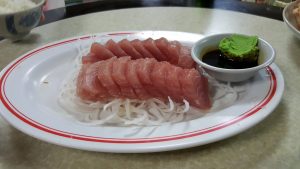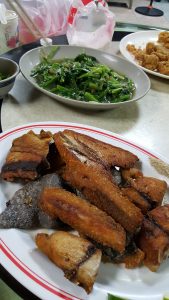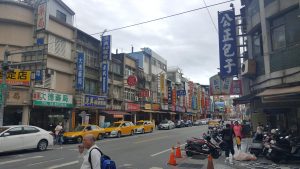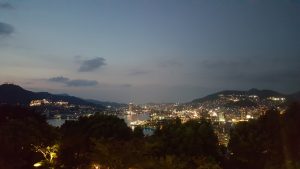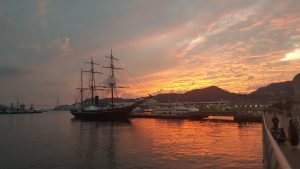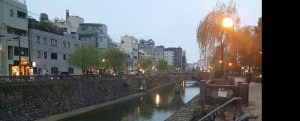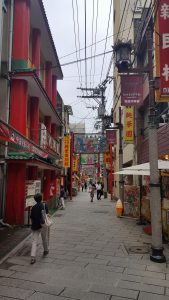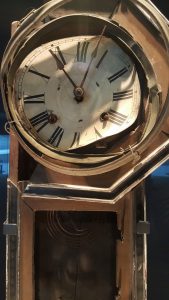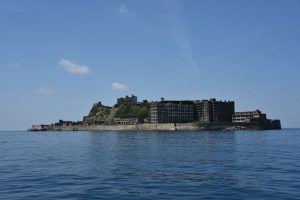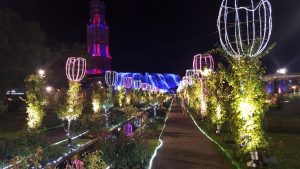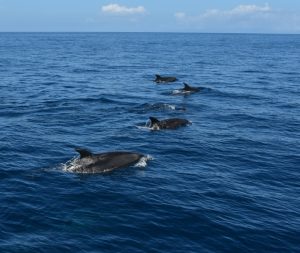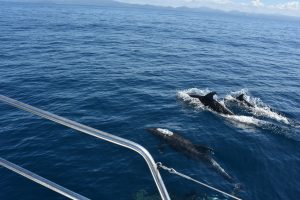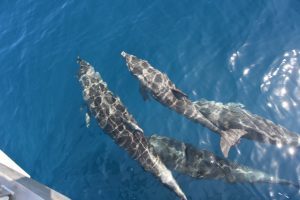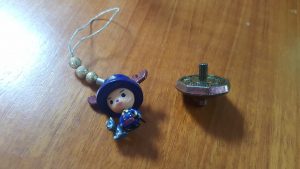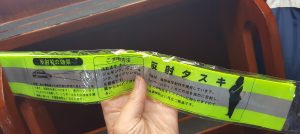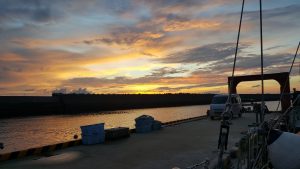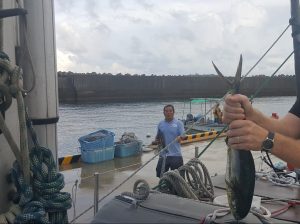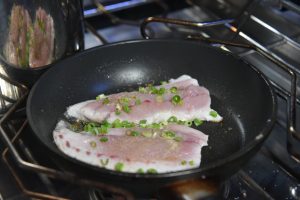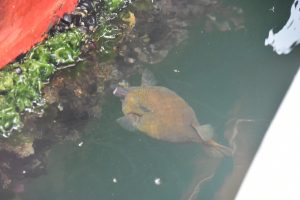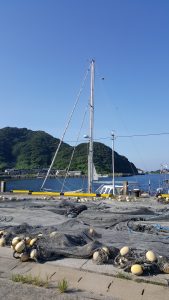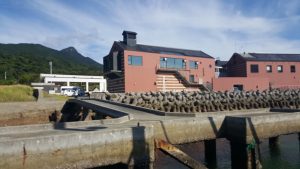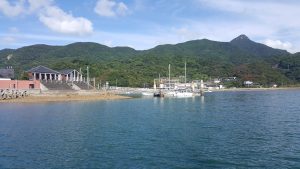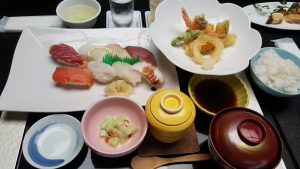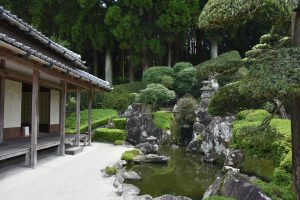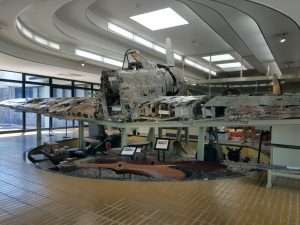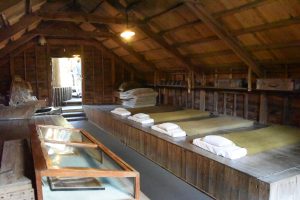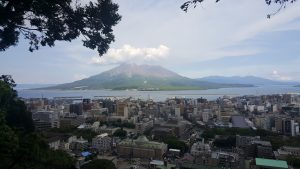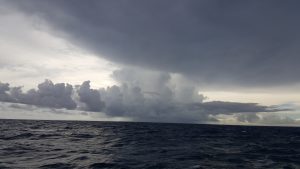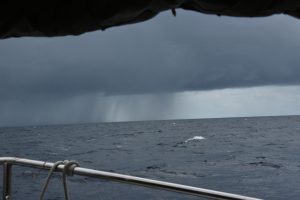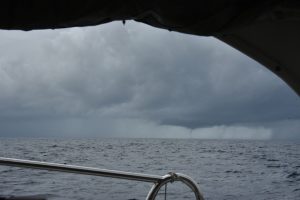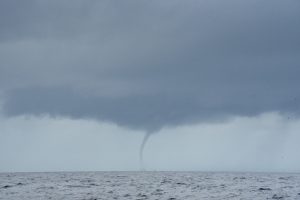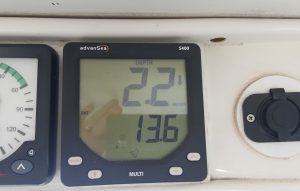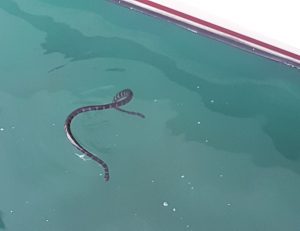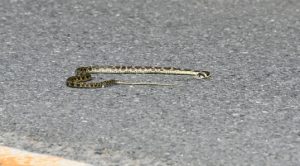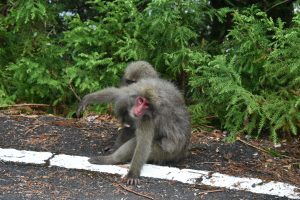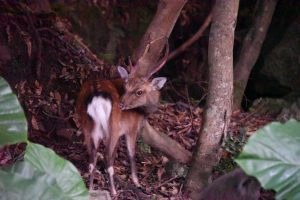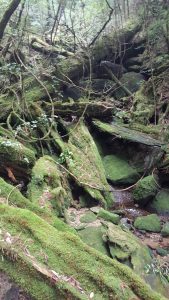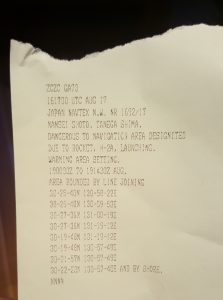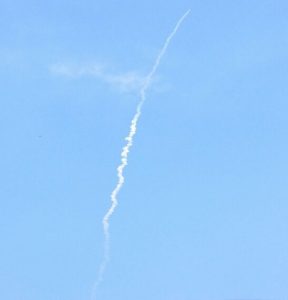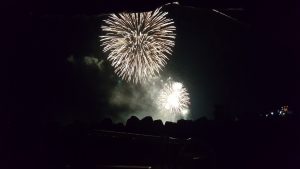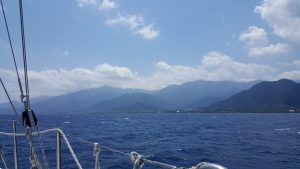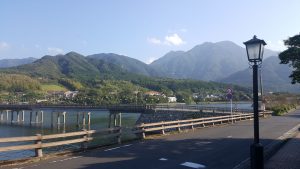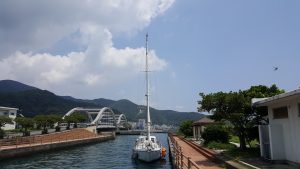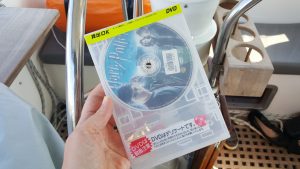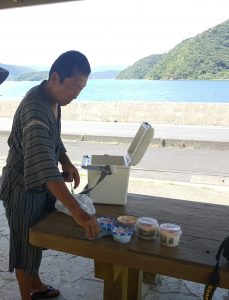We arrived in Kaohsiung just before sunset on Sunday. As mentioned in the previous post, Kaohsiung is Taiwan’s second largest city, so a nice change from Kenting and Hualien which were rather small. Kaohsiung is also Taiwan’s largest port, and as we chose to enter the port from its south entrance, we were able to sail (or motor in this case) through a fascinating, narrow port “corridor” lined with cargo ships and massive cranes, many of which were in the process of lifting cargo containers onto the ships. It looked like one big game of lego with the crane operators carefully putting colourful lego bricks into place.
It soon became clear that sailboats are a rather rare sight in Kaohsiung, and foreign boats even more so. Cargo ship crews along the port corridor stopped what they were doing in order to wave at us, and some even yelled “hello” to us in English. Most often we are just ignored by cargo ship crews, so this was rather a pleasant surprise and for an hour, we almost felt like marine royalty!
We had hailed the port authority on our VHF radio before entering the port. Here, as opposed to much smaller Hualien port, radio traffic was constant and the port radio operators were extremely professional. We could hear them telling other ships to mind our little sailboat, and for the first time ever, we had very clear instructions as to when and how to enter the port. This was slightly intimidating (even though we’ve been in contact with port authorities in many places, we’ve mostly been able to sneak into port as we have seen fit ourselves), but at the same time very reassuring.
A cargo vessel had to pass us in the port corridor, and it became quite a show (for our safety, I am sure) despite the fact that there was enough room to overtake us all along. First the vessel itself blew its horn, which made a massive sound. Then the port authority hailed us on the radio to let us know that the vessel would be passing to port (meaning to the left). A few seconds later, the pilot on board the vessel also hailed us to let us know that they would be overtaking us. And finally, when the vessel was overtaking us, the pilot, and a person who we assume to be the captain of the vessel, emerged in an outside area with their binoculars directed at us. When they saw that we were looking at them, they waved at us and then re-entered the bridge.
We are currently berthed in a very central location in a new marina (actually, it is so new that it is still under development so there are still bits and pieces that are not working). We have water and electricity, which is great. The marina staff are really friendly, and doing their best to make up for the fact that the marina fees are rather high despite the marina still being work in progress.
We have done quite a bit of walking around the city itself, and admired the fantastic views over the harbour and the rest of the city from the 85 Sky Tower, Taiwan’s second largest building. We’ve also visited the hustle and bustle of a local night market, which we found to be bursting with people enjoying their evening food in a social setting even on a Tuesday night. We are quite enjoying our time in Kaohsiung; this is a well-kept place with lots to do and see.
The one thing that we do not like about Kaohsiung, however, is the level of pollution. Already 1,5 hours after our departure from Kenting (on an 11-hour journey), we noticed that it was completely foggy in the direction that we were going. We couldn’t see ships that we knew were just a nautical mile away. Soon thereafter, the smell hit us and we realised that the “fog” was actually “smog”. A Kenting sailor had mentioned that it was always polluted on the west coast, but we hadn’t given it much thought as the skies were always clear in Kenting. In Kaohsiung city, we have now seen some people wear pollution masks on the most polluted days, so it seems that they are as used to pollution as people living in Chinese cities like Beijing. Such a shame as this would otherwise be a very nice city.
